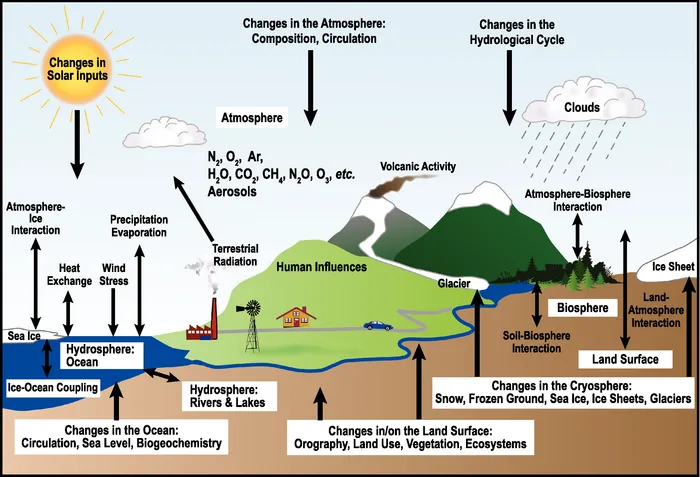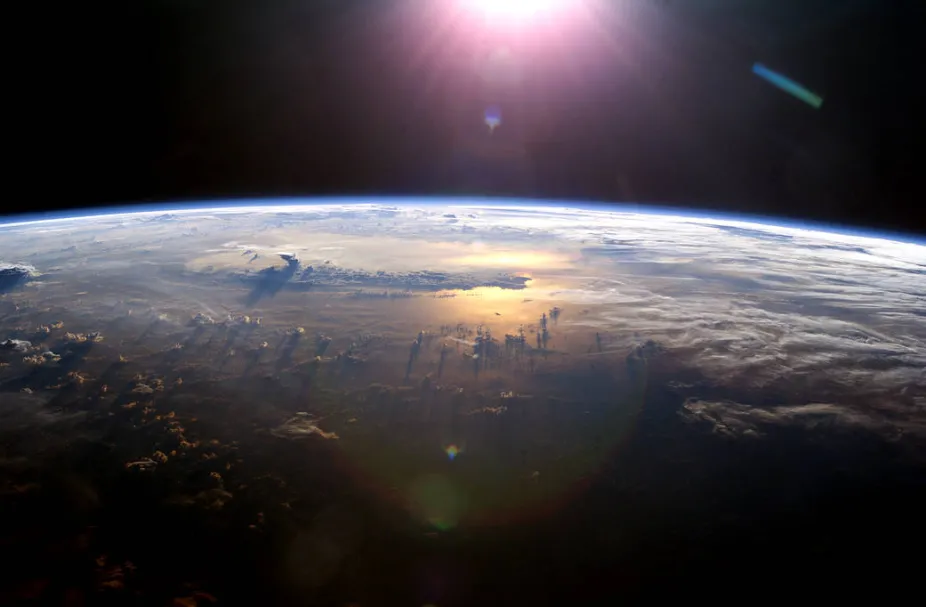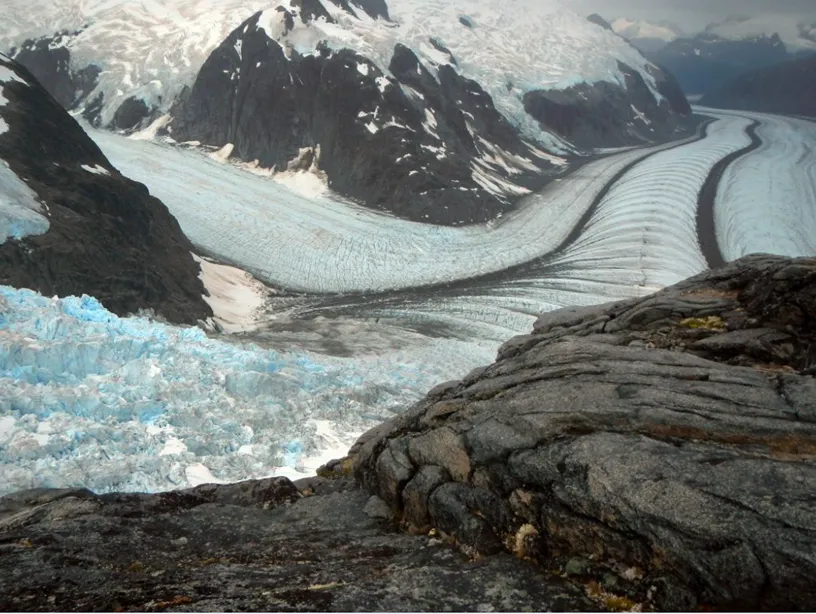The Climate System
Our planet’s climate depends on the whole Earth system. The Sun, land (geosphere), ocean (hydrosphere), ice (cryosphere), and living organisms (biosphere) interact with the atmosphere as part of the climate system in many complex ways.

The components of the climate system, their processes, and interactions. This includes the atmosphere, biosphere (life), cryosphere (ice), hydrosphere (water), land and human influences, and the interactions between these components (shown with two-way arrows). The parts of the system that can change are labeled as "Changes".
IPCC AR4 FAQ
The Sun

The Sun provides all the incoming energy to Earth’s climate system.
NASA
All energy in the Earth’s climate system originates from the Sun. Ninety-three million miles away, the Sun is a ball of gases undergoing nuclear reactions and giving off very large amounts of energy. The Sun constantly provides the top of our atmosphere with an average of 342 Watts per square meter of energy. If all of this energy was reflected straight back out to space by the atmosphere and clouds, the average temperature of Earth would be around -19°C (-1°F). Brrr! That's cold!
Instead, not all of the Sun’s energy is reflected back out to space. Some is absorbed by Earth’s atmosphere and surface, and this absorbed energy keeps our planet from freezing.
Incoming Solar Energy and “Albedo”
As energy from the Sun reaches Earth, light colors reflect a portion of it back to space, and dark colors (like the deep blues of Earth’s oceans) absorb it. The fraction of solar energy reflected is called albedo, which can also be thought of as brightness. About 30% of solar energy reaching Earth is reflected by clouds, ice, snow, or other lighter surfaces. The other 70% is absorbed by the darker ocean and land surfaces.
The Atmosphere

Earth’s atmosphere is visible as the hazy blue and orangish bands in the photo, with the Moon shown in the background. The atmosphere is a relatively thin layer, extending only about 100 km (60 miles) above Earth’s surface, but is an extremely important part of the climate system.
NASA
Earth’s atmosphere is made up of 78% nitrogen and 21% oxygen. The remaining 1%, called trace gases, includes water vapor (H2O), ozone (O3), carbon dioxide (CO2) and methane (CH4), which absorb and then release energy as infrared radiation or heat. By absorbing this heat, the gases act to trap energy on its way back out to space. Gases in Earth’s atmosphere keep the average temperature of the lower atmosphere a habitable 14°C (57°F) through a process known as the greenhouse effect. But today, there are more of these heat-trapping gases, which are released by burning fossil fuels. The increased amounts of these gases are warming the planet at a greater rate and causing climate change.
The gases in Earth’s atmosphere play other roles as well. For example, ozone (O3) within the upper atmosphere’s ozone layer protects life from harmful doses of solar radiation. Carbon dioxide (CO2) is used by plants for photosynthesis, and water vapor (H2O) condenses to form the clouds and precipitation that form our weather.
Ocean

The ocean covers the majority of Earth’s surface and helps to store and transport heat in the climate system.
Michael Matti, Flickr/Creative Commons
Covering approximately 70% of Earth’s surface, the ocean acts as a vast heat storage device in the climate system. Ocean circulation serves to transport heat from the equator to the poles. In addition, gases from the atmosphere can dissolve in the ocean and be stored for many years in its depths. However, when too much carbon dioxide is dissolved, seawater becomes more acidic, making it harmful to marine life.
Land
Earth’s land masses affect the climate system and also influence weather patterns. On long geological timescales, changes in the distribution of land masses around the globe have had major effects on the movement of air around the planet, causing large changes in Earth’s climate. On much shorter timescales, changes in the surface of the land due to agriculture, forestry, and urbanization alter the amount of energy that is being absorbed or reflected back to space. Major volcanic eruptions can also impact Earth’s climate, as these eruptions release gases and particles into the upper atmosphere where they reflect sunlight and affect the chemistry of the atmosphere.
Ice

Glaciers and areas of permanent snow cover account for just over 2% of Earth’s total water, but nearly 70% of its freshwater.
Twila Moon, National Snow and Ice Data Center
Nearly 70% of Earth’s freshwater is contained in ice caps, glaciers, and regions of permanent snow cover. With their bright white color, ice and snow reflect large amounts of incoming solar energy back to space. Ice also serves to insulate the ocean and land from the atmosphere. The presence of ice can change the dynamics of wind and weather processes.
The Biosphere
Living organisms comprising Earth's biosphere affect Earth’s climate system. They can change the chemical makeup of the atmosphere by, for example, absorbing carbon dioxide through photosynthesis as plants and algae do, and by adding chemicals to the atmosphere from pollution as humans do. Life also alters Earth’s surface, changing the colors of the landscape as more plants are grown or harvested, for example. The changes affect the albedo, or brightness, of Earth’s surface and influence the overall climate system.